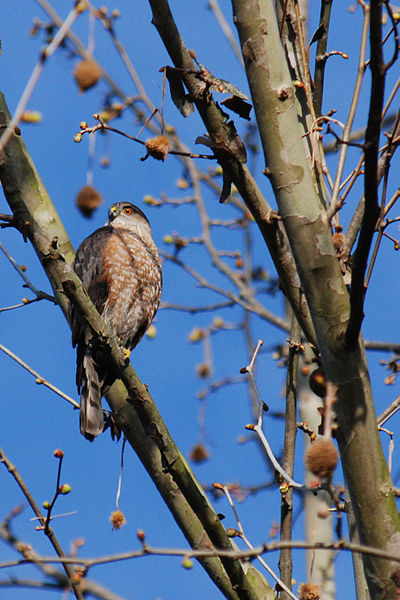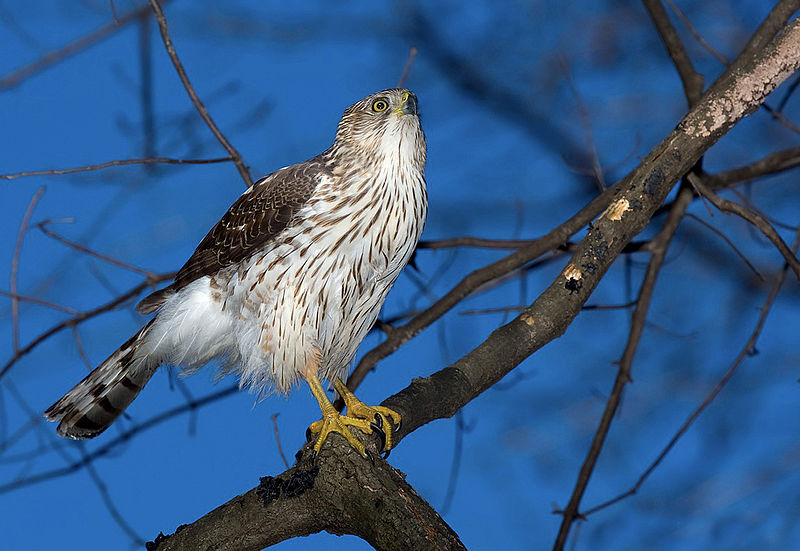cooper's hawkAccipiter cooperii
Identification:
A crow-sized hawk, mainly bluish gray on the top, with a long banded tail which appears rounded when the bird perches. Juveniles have reddish streaks on the breast, while in adults the streaks have resolved to more prominent bands. On the head the “cap” is darker than surrounding parts. Adults have red eyes, juveniles yellow. This species very similar to the Sharp-Shinned hawk. The Cornell Lab of Ornithology web site has a very good ID page comparing the two. Behavior: The Cooper’s hawk is an “aerial forager” – it takes its prey in flight, killing the victim by squeezing before consuming it or giving it to young. Its typical flight pattern is “flap-flap-glide.” Pairs nest high in trees in a nest built of sticks and sometimes lined with bark or small twigs. The species prefers densely forested habitat, but seems to have adapted to urban and suburban sites, possibly because their main food source is plentiful there. What brings it to the SBG? Food, cover, nesting sites. The Cooper’s Hawk feeds mostly on medium sized birds and small mammals. These sneaky and speedy predators will patrol the skies around the SBG looking to spot other birds that frequent the garden. Though they are high on the food chain, these smaller hawks do have predators and they are rather secretive. They prefer the white pine for their nest of sticks and bark but will make use of other tree species. When can I see it? Year-round in central Pennsylvania. |


